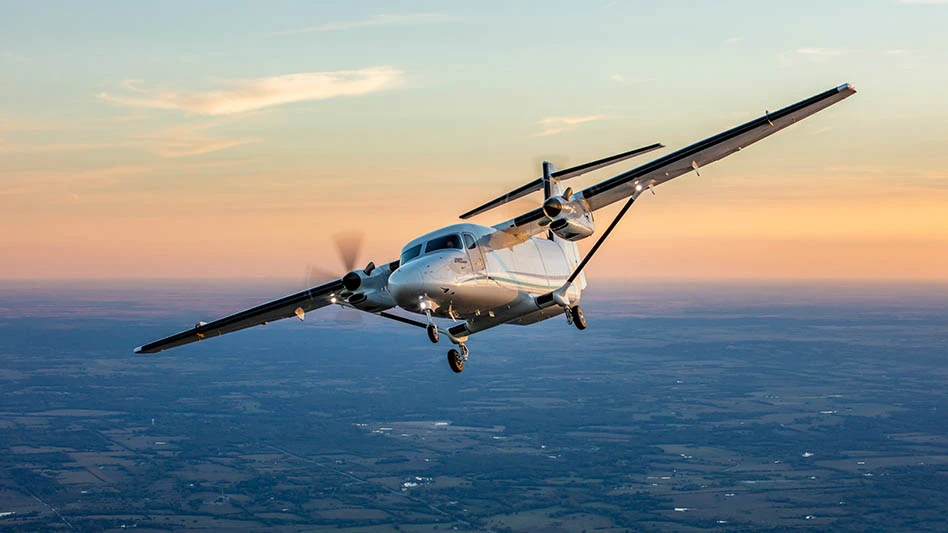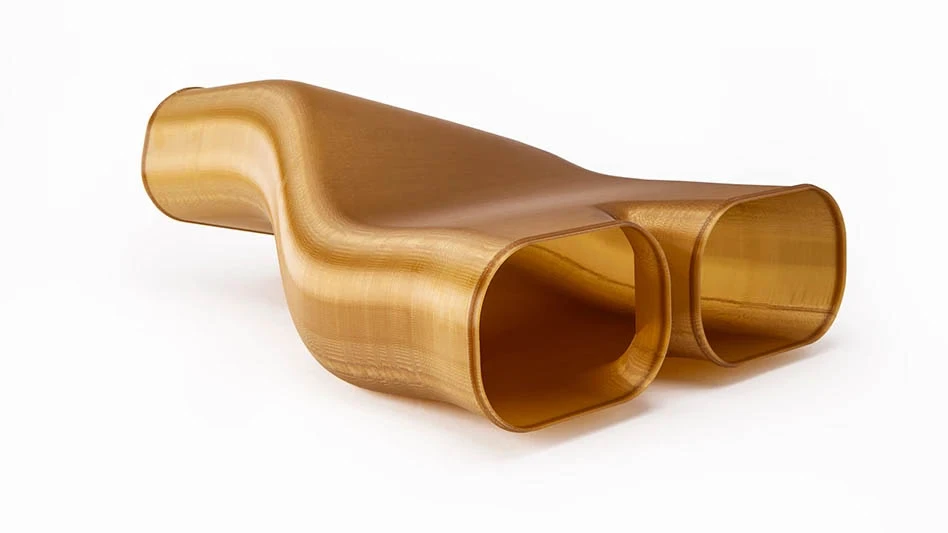
Q. What technology challenges do you see for your customers in the next 18 months and what is Laserdyne doing to address those challenges?
A. The aerospace industry and increasingly the land based power turbine industry rely heavily on laser drilling for producing cooling holes in components. These components are made of difficult-to-machine, heat-resisting alloys and now, more frequently, include a thermal barrier coating through which the holes must be drilled. Two immediate and pressing challenges for engine makers are to improve fuel efficiency and reduce emissions from engines. For us, this translates into an opportunity to provide modern systems and features to produce holes in large quantities with more consistent air flow. It is also creating growing interest in the application of laser processing for producing a new generation of shaped holes. We are also well aware of the ongoing pressures to deliver more robust systems and processes. These are the main challenges faced by our business and those being addressed with our new product offerings and new services.
Q. How are you addressing more consistent air flow needs?
A. We are addressing this in two ways. First, we have added features to our standard systems, based on the principal of "At Focus Drilling," that make the drilling process more robust. By drilling at focus and then controlling the resulting hole size using the unfocused beam diameter from the laser, the process is much more forgiving to changes in the position of the part surface relative to the laser beam. This will also replace defocusing as a method for controlling hole size. Second, and possibly most important, we are providing tools for more easily ‘dialing in' the process. This can be used to control hole size directly or based on air flow measurements. The operator doesn't have to make a judgment about how much to change the beam size or how much to defocus to make changes to the hole size. All that is required is to measure the hole size with gages or other everyday measuring devices. So reducing operator skill level requirements is definitely in the future for these systems.
One of our important aerospace customers is using the At Focus Drilling feature in a completely automated laser system that employs full robotic part load/unload features. The end result is consistent around the clock production and airflow held to very tight tolerances.
Q. Explain the significance of shaped-hole design; how have the holes been made and how will they be made?
A. Shaped holes are an important design element for turbine engine designers because they can be used to fine-tune the cooling of engine components. While they are used sparingly today, they would be utilized more widely by engine designers if the holes could be produced more efficiently and on a variety of surfaces. Shaped holes of a few specific designs have been produced for more than five years using our BeamDirector technology. In these cases, laser has replaced EDM, which is considered the incumbent technology for shapedhole production. Because EDM is relatively slow, shaped holes have been used sparingly in new engine designs. Additionally, ceramic-like thermal barrier coatings on engine parts can't be processed using the EDM technique.
Q. How was the shaped-hole technology developed?
A. In the 1990s there was a transition from combustor designs with a few hundred relatively large cylindrical holes produced on our systems to the effusion-cooled combustors of today with hundreds of thousands of shallow angle holes. The next evolution in engine cooling - shaped holes - is what Laserdyne's next generation of systems, those we are introducing now, is addressing. Interestingly, the advances that make this possible will also translate into increased production rates for conventional parts.

The Laserdyne 795 system features a more powerful CL50K Nd:YAG laser along with numerous integrated hardware and software features.
Q. Learning to operate multi-axis laser systems, like any multi-axis machine tool, is challenging. How are both old and new users being trained to get the most out of these systems?
A. First of all, the new systems are less operator-dependent. We are adding intelligence and processes to these systems in order to reduce the amount of user training and knowledge required to have the systems function properly. For example, setup of our BreakThrough Detection feature initially required a fairly technical operator to perform, set up, and use the software. Consequently, this was a barrier to its widespread adoption and use. To reduce the skill level and time required to start deriving benefit from this capability, we have designed an automated setup process that allows the operator to use the feature without having to understand how it works or how to set it up. The amount of training is much reduced.
Second, we're introducing new methods of training our customers. These methods include internet-based short training segments, DVD training programs in 15 and 30 minute lengths, and unlimited use of the S94P simulator.
Third are the annual User Group meetings - effective for introducing Laserdyne users to new features. It's also a great venue for users share experiences and information.
Finally, the Laserdyne Technology Center provides existing or prospective users access to the latest systems with a full suite of features to solve a current manufacturing need. Users of the Technology Center can program and operate these systems as if they were their own and use our Applications Engineering resources to help them work out solutions to manufacturing issues. A common use of the Center is for an existing user to bring their part program and fine tune it, in some cases integrating a new capability based on system feature that they had not previously used. They then go back home and introduce processing programs and procedures that are more productive and are leading to improved quality.
Q. How is Laserdyne responding to competitive pressures?
A. We're aggressively communicating the value of the integrated suite of our capabilities and features - how they improve quality, consistency, and processing speed on the shop floor. Users of the technology care primarily about performance and reliability.
Q. Why is Laserdyne introducing so many new products and what are they?
A. The Laserdyne 795 brings together the many new designs and system enhancements introduced over the last nine years since the introduction of the first 790. For drilling applications, the 795 has the new CL50K Nd:YAG laser and many new integrated software features.
The Laserdyne 450 is a system designed for drilling smaller turbine engine components such as blades, nozzle guide vanes, shrouds, and heat shields. It has new features such as touch probing and onboard post processor.
A key component in both of these systems is the S94P controller - a combination laser, sensing, and motion controller - allowing operators to perform tasks that were impossible a few years ago.
Q. Why is it important that Laserdyne design and manufacture the entire system, including machine design, software, numerical control, laser, etc?
A. We learned in the early days of Laserdyne that the key to getting the most from laser processing involved integrating the laser, motion system and control, user interface, and process sensors. Designing and manufacturing all of the major components of the system allow us to introduce technology as it becomes available to more tightly integrate the various components. The end result is process capability and control. Drilling with today's systems integrates the optics of the laser with sensors in the machine tool structure and a motion system all optimized for the unique features of laser processing.
Q. Looking beyond 2008, what do you see in Laserdyne's longer term future for high power CO2 and Nd:YAG laser systems?
A. Within our projects is to develop new capabilities and applications in welding and micro-machining based on new integrated laser sources, including short pulse length solid state lasers; and these are not just distant vision. In addition, the Technology Center is open to all existing customers to capitalize on this new technology. They can come to Laserdyne for the development of new processes with our technical help so that they can become more productive now.
Also, from watching the evolution toward significant unattended manufacturing in 2D sheet metal cutting, I expect that the future will include greater use of automated (robotic) load/unload of all types of laser systems. We already have designed and built systems that operate unattended 24/7 for aerospace manufacturers and we will continue to refine this capability.

Explore the May June 2008 Issue
Check out more from this issue and find your next story to read.
Latest from Aerospace Manufacturing and Design
- July is for learning – so drop in for this month’s second Manufacturing Lunch + Learn
- Essential strategies to protect your data
- NASA selects instruments for Artemis lunar terrain vehicle
- Twin-cutter boring head
- Bell awarded funding for X-plane build phase of SPRINT program
- Shaft coupling clamps
- #46 Lunch + Learn Podcast with SMW Autoblok
- Gleason Corp. acquires the Intra Group of Companies





